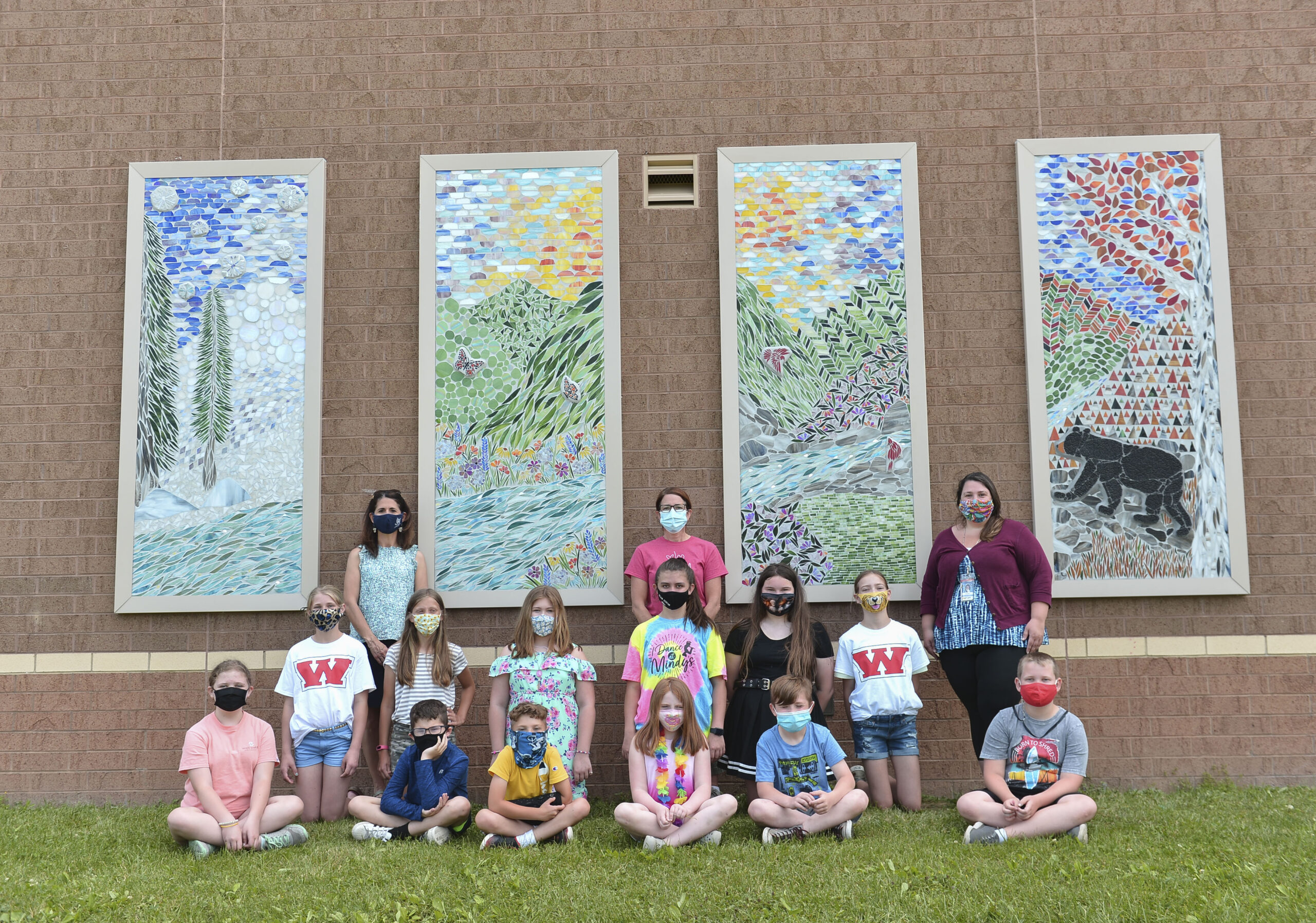Falling autumn leaves in a scene that just means home, if you were born here or moved here and liked it.
Swirling snow, touching hills and hollows, with soon-to-be followed spring flowers in bloom.
A proud black bear, foraging in a river in the summer, dappled by the summer sun.
West Virginia’s four seasons were in full glory on the day before the last day of school, two weeks ago at Mylan Park Elementary.
That’s when the crew from City Neon rolled up, to affix the four massive, glass-cut mosaics – each depicting the change of seasons in the Mountain State – at the school on Chaplin Hill Road.
That’s when Sarah Billotti was giving a little smile like the Mona Lisa.
“I can tell you I was thrilled,” the school’s art teacher and visionary behind the project said.
Thrilled, she was, because, artistic truth be told, she wasn’t quite sure how it was all going to turn out at first.
COVID-19 has a way of cutting into art like that.

Art, interrupted
This visual and viral (in the clinical sense) odyssey began in March 2020, when Billotti’s school received some dollars from Your Community Foundation of North Central West Virginia, the Morgantown-based outreach organization that supports artistic and intellectual pursuits.
The ink was barely dry on the check from the foundation’s Stephen D. Tanner Children’s Enrichment Fund Grant when Gov. Jim Justice ordered all schools in the state shuttered, due to the-then pending pandemic.
Which put the project on hold.
As it was an interactive project using a then-unfamiliar media for the art teacher – cut and polished glass pieces – the vision had to stay in her head until the start of the 2020-21 school year.
With the students back, the art could commence. First, a road trip was required to Paden City, West Virginia’s glass-making headquarters.

All the marbles
For a while in the early 1900s, the little town that bisects Wetzel and Tyler counties had a big name in glass.
How big?
Well, Paden City was once known as the biggest maker of marbles in the world, back when youngsters were shooting those tiny glass spheres for fun in the precision game.
The town had multiple glass factories. The Paul Wissmach Glass Co., which supplied the colored sheets of glass for the Mylan Park Elementary project, has been in business since 1904.
With the glass ordered and shipped, Billotti went to work, cutting it and polishing it, after thorough instruction.
So did teachers and the school’s older students.
Then, everyone would drop by the affix the glass pieces to panels, as per Billotti’s sketches.
Teachers would drop in on their planning periods. Kids would devote recesses to the work. Staffers would come by early or during their break time.
It’s yours
And slowly, wondrously, those four panels, depicting those four seasons, began to come into clear-cut focus.
The mountains, the leaves.
And the bear, also.
It was therapy – of the most translucent kind.
“We needed something to get us out of COVID,” Principal Anne Lupo said.
“Everybody worked on it, so everybody ‘owns’ it now,” Billotti said. “That’s what art is supposed to be.”
Heart of glass
“I get chills looking at it,” said Pam Rush, a secretary at the school.
Not before breaking out in a cold sweat during the Paden City road trip, however.
She accompanied Billotti and Lupo to the factory, where, well, she broke a sheet of glass in Wissmach signature blue.
Rush wasn’t hurt, but she was mortified.
The psyche of the employee leading the tour, though, didn’t shatter one bit
“He told me, ‘You’d be surprised how many times that happens,’ ” Rush remembered.
“I’m going back. I’m getting ready to remodel my kitchen and I want to incorporate some glass from there.”
TWEET @DominionPostWV






